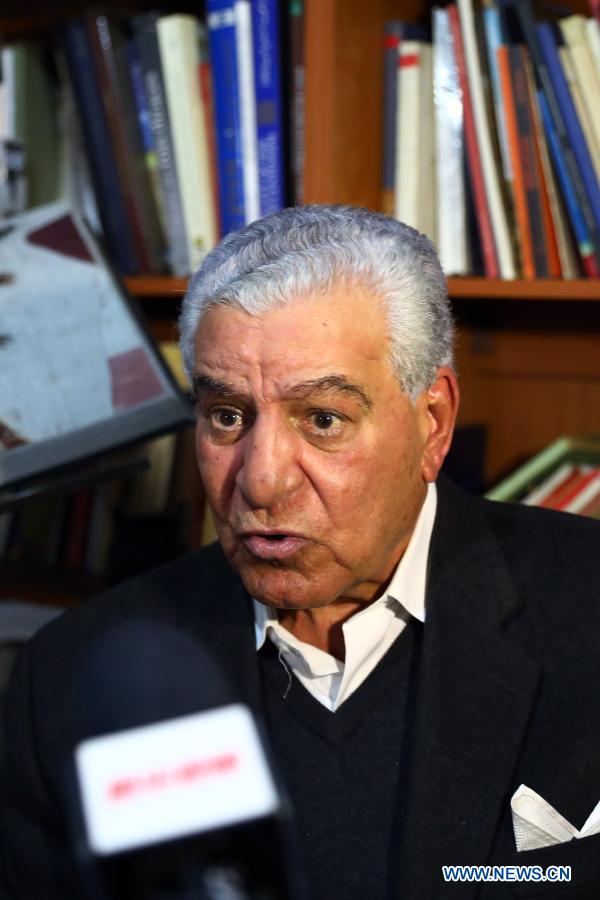
Top archeologist and Egyptologist Zahi Hawass speaks during an interview with Xinhua in Cairo, Egypt, Jan. 31, 2021. (Xinhua/Ahmed Gomaa)
CAIRO, Feb. 3 (Xinhua) -- The recent discovery of a funerary temple in Saqqara necropolis near the Pyramids of Giza adds a new queen to ancient Egyptian history and rewrites the history of the area, said top archeologist and Egyptologist Zahi Hawass in a recent interview with Xinhua.
The unearthed funerary temple reveals the name of Queen Neit for the first time in history. She was the wife of King Teti, the first pharaoh of the Old Kingdom's Sixth Dynasty that ruled Egypt over 4,300 years ago.
Before the discovery, modern Egyptologists knew only two wives of King Teti: Iput I and Khuit II.
"We found Neit's name inside the funerary temple near her pyramid, which I discovered in 2020 but didn't know to whom it belonged (at that time)," Hawass, also a former antiquities minister, told Xinhua.
Announced in mid-January, the massive discovery was made by an Egyptian mission led by Hawass, which comprises Zahi Hawass Center of Egyptology that belongs to Bibliotheca Alexandria and the Supreme Council of Antiquities of the Egyptian Ministry of Tourism and Antiquities.
"Egypt has about 124 pyramids, including 13 in Saqqara," Hawass noted.
Queen Neit is not the only addition to history made by the discovery, for the mission also found dozens of colorful wooden, anthropoid coffins with mummies dating back to the Eighteenth and the Nineteenth Dynasties of the New Kingdom, showing that King Teti was worshipped as a god by people of those dynasties who were buried around his pyramid.
"It is the first time to find coffins from the New Kingdom in Saqqara. The findings tell that King Teti was worshipped by people of the Eighteenth and the Nineteenth Dynasties, including princes, senior employees, and also ordinary people," Hawass said.
Among some 57 unearthed burial shafts, one alone contained 54 coffins, according to the chief archeologist.
The mission also unearthed burial masks, funerary figurines known as ushabtis, pots, stelae, miniatures of wooden boats with sailors on board, and a four-meter long, one-meter wide papyrus, representing Chapter 17 of ancient Egypt's Book of the Dead, all dating back to the New Kingdom some 3,000 years ago.
"We found inside the burial shafts pottery that gives evidence of trade relations between the New Kingdom of ancient Egypt and Crete, Syria and Palestine, as ancient Egyptians imported oils from them," Hawass pointed out.
He emphasized that what has been unveiled in Saqqara so far is only 30 percent of what is hidden underground. "Wherever you dig in Saqqara, you find antiquities."
Hawass added that his Egyptology center at Bibliotheca Alexandria "teaches the Egyptian youth and children archaeology and Egyptology and acquaint them with the ancient Egyptian antiquities and language," noting the mission in Saqqara includes junior archeologists from the center.
With regards to Egypt's archeological cooperation with China, Hawass expressed his happiness with the work of the first Egyptian-Chinese archeological mission that started in late 2018 at Montu Temple in the Karnak Temple Complex of the monument-rich city of Luxor.
"We're looking forward to more archeological cooperation with China. China is a great country with a great civilization. When the Egyptian and the Chinese civilizations meet together, I believe the outcome will be great and very unique," the top Egyptologist told Xinhua.